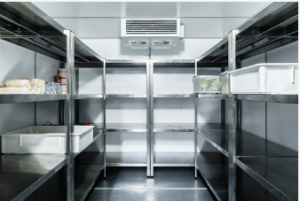Access hatches provide convenient access to the top floor of a building or other structure. They can be used for maintenance and repairs, installation of equipment, and more.
Ace Access Hatches hatches access Adelaide in various sizes and materials to meet your requirements. When choosing, consider factors like insulation, security, fire resistance, and accessibility.
Durasteel
 Durasteel is a high-performance composite board composed of a fibre-reinforced cement core with outer facings of 0.5mm perforated galvanised steel mechanically bonded to each surface. Ideal for use in barriers, ceilings, service enclosures and ventilation ducts alike – Durasteel offers up to 56dB of acoustic insulation, especially when noise reduction is desired.
Durasteel is a high-performance composite board composed of a fibre-reinforced cement core with outer facings of 0.5mm perforated galvanised steel mechanically bonded to each surface. Ideal for use in barriers, ceilings, service enclosures and ventilation ducts alike – Durasteel offers up to 56dB of acoustic insulation, especially when noise reduction is desired.
Durasteel provides up to 4 hours of fire protection tested according to BS476: Part 22: 1987 and meets various blast resistance standards. Furthermore, as it is non-combustible, it makes an ideal solution for protecting warehouses, storage facilities and transport terminals externally.
Water-resistant even when saturated and impervious to rain or sprinkler actuation makes this material ideal for industrial environments and is widely used in nuclear power stations and other high-risk facilities such as metro and rail infrastructure.
Due to its superior impact and blast resistance, this material can withstand long celluloid, hydrocarbon or jet fires and hose streams from firefighting personnel. Ace Access Hatches hatches access Adelaide properties are significant for industrial and commercial properties since they safeguard critical equipment while enabling personnel to evacuate the building in case of a fire safely.
Furthermore, it is incredibly durable and can withstand heavy traffic or environmental exposure. It is a safe, long-term and cost-effective alternative to traditional structural concrete walls and doors.
Ace Access Hatches hatches access Adelaide offers a versatile solution, offering various configuration and framing options to meet the project requirements. As a result, this light and slim wall system can be quickly installed on-site without needing special foundations, cutting down construction times and delays to the overall endeavour.
Durasteel barrier systems are becoming increasingly popular for transformer applications, mainly where space is limited, and existing underground foundations cannot be disturbed. In addition, their relatively light weight allows them to be mounted onto more straightforward foundations, leading to significant cost savings over traditional concrete barriers.
Ductile Iron
Ductile iron has the same properties as grey iron but much greater strength. This property allows designers more freedom when crafting designs, which can be especially advantageous in industrial applications like pipe and automotive components.
Ductile iron castings offer excellent strength and abrasion resistance, ideal for high-wear areas. Plus, they have many of the advantages of steel, like its low melting point, good fluidity and machinability.
Composed primarily of carbon (3.2 to 3.6%), silicon (22 to 28%), manganese (0.2% to 0.2%), magnesium (0.05-0.04%), phosphorus (0.04-0.05%) and less than 0.4% copper, other elements can be added for increased flexibility or strength at the expense of corrosion resistance; for instance, chromium or nickel can be added for enhanced oxidation protection.
Ductile iron comes in various forms, the most popular being ferrite or pearlite. Other common varieties include spheroidal graphite and nodular cast iron (also referred to as GS iron or nodular ductile iron).
Spheroidal graphite, an essential element in ductile iron’s strength and yield properties, plays a significant role. By binding to other materials in the matrix, ductile iron becomes stable and corrosion-proof over time – perfect for impact protection applications such as bollards.
Other advantages of ductile iron include its resistance to ground shift and other high pressures, such as those from above. PVC piping, on the other hand, tends to crack and burst under such circumstances.
This type of iron is known for its superior resistance to abrasion and wear, making it the perfect material for friction wear mechanisms such as engine crankshafts. It also finds applications in gearboxes, pumps, machine frames and more.
Ductile iron is known for its superior tensile and yield strengths and resistance to stress regression and creep. These effects are typically caused by frequent changes in temperature and pressure, which can weaken any material over time.
Ductile iron is ideal for access hatches in underground infrastructure due to its superior tensile and yield strengths and outstanding abrasion resistance. In addition, safety grates can be added for fall-through protection while forming skirts simplify precasting.